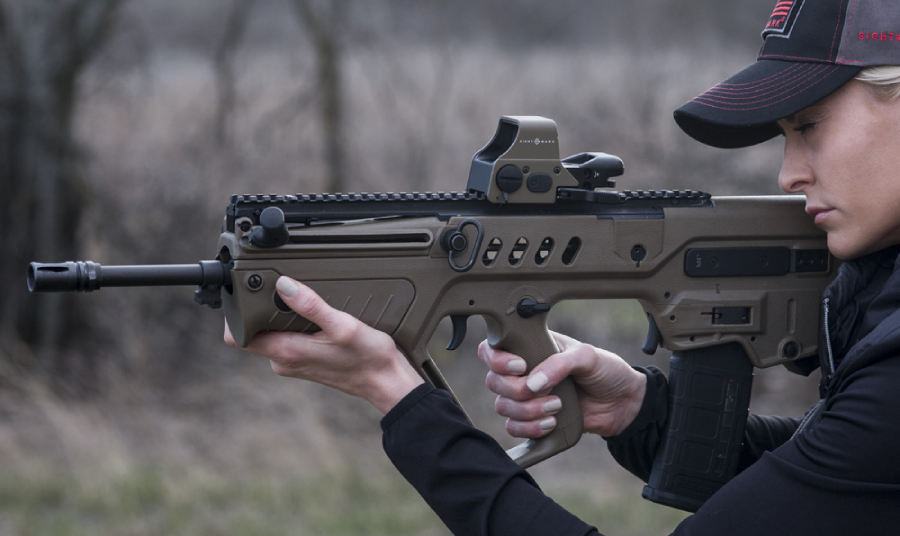If you’re in the market for a new optic and you’ve been cruising forums or chatting up your range buddies, chances are you’ve stumbled across the term “reflex sight.” But what is it, really, and more importantly, what’s it good for? Let’s tackle this head-on and answer the question while clearing up a few common misconceptions along the way. For instance, thanks to video games like Call of Duty, many people think reflex sights provide pinpoint accuracy at absurd distances by enhancing magnification levels. While reflex sights do simplify aiming and improve speed, they’re not magic—you still need proper technique, and their strengths lie primarily in close-to-mid-range scenarios.
Real-World Problems with Iron Sights
Iron sights are the original firearm aiming system—reliable, simple, and non-dependent on battery power. But let’s be real: they’re not always the easiest to use. For one, they require proper alignment of the front and rear sights, which means your focus has to shift between three points: the rear sight, the front sight, and your target. This setup forces you to prioritize focusing on the front sight, leaving the target slightly blurred. While this works in controlled environments, it’s a challenge in dynamic or high-stress scenarios where keeping your eyes locked on the target is crucial. In high-stress situations or when speed is critical, that’s a lot to ask from your eyes.
Not to mention, iron sights can be tough to see in low-light conditions. Sure, some come with tritium inserts or fiber optics, but even those have their limitations. Reflex sights, on the other hand, simplify aiming by allowing you to focus on just one thing: the reticle.
Reflex Sight vs. Red Dot Sight
First things first: the terms “reflex sight” and “red dot sight” are often used interchangeably, but they’re not quite the same thing. A reflex sight is a type of red dot sight, but not all red dot sights are reflex sights. Confusing, isn't it?
A reflex sight uses a reflective lens to project an illuminated reticle (often a red dot) that appears superimposed over your target. The magic here is that the reticle, if it's correctly zeroed, stays aligned with your barrel no matter where your head is positioned. This is called parallax-free aiming.
Other types of red dot sights include holographic sights (which use lasers and holograms) and prism sights (which use etched reticles and are better for magnification). So, while all reflex sights are red dots, not every red dot you see is a reflex sight.

What Is a Reflex Sight Good For?
1. Quick Target Acquisition
Reflex sights shine when speed matters. Because the reticle is superimposed over your target, you don’t have to worry about aligning multiple points. Just put the dot where you want the bullet to go and pull the trigger. This makes them ideal for:
- Home defense
- Competitive shooting
- Hunting game (e.g., turkey hunting)
2. Situational Awareness
Reflex sights are typically designed without magnification, which means you get an unlimited field of view. This is crucial in close-quarters scenarios where you need to keep an eye on your surroundings.
3. Versatility Across Firearms
Reflex sights work on a variety of platforms—handguns, shotguns, rifles, and even crossbows. Whether you’re mounting it on an AR-15 for tactical training or a turkey shotgun for spring season, it’s a versatile option.
4. Low-Light and Brightness Adaptability
Most reflex sights come with adjustable brightness settings, making them easier to use in low-light or high-glare environments. Some models even come with night vision compatibility.
What Reflex Sights Are NOT Good For
1. Long-Range Precision Shooting
Reflex sights are made for speed, not distance. The lack of magnification means they’re not ideal for long-range shots. If you’re trying to hit a 10-inch steel target at 500 yards, you’ll want a magnified optic or a scope with a fine reticle.
2. Battery Dependency
Unlike iron sights, reflex sights rely on batteries to illuminate the reticle. While many models boast long battery life and auto-shutoff features, you’ll still want to carry spares—just in case. But keep in mind that certain models have incredibly long battery lives. The Sightmark Wolverine, for example, has 1 million hours of runtime on low mode.
3. Potential Learning Curve for New Shooters
Reflex sights can simplify aiming, but they’re not always the best first optic for new shooters. Without proper technique, beginners might struggle with finding the dot quickly, especially if they’re not used to keeping both eyes open while shooting.
Final Thoughts: Is a Reflex Sight Right for You?
A reflex sight is an outstanding optic for speed, versatility, and close-to-mid-range shooting. It simplifies the aiming process, keeps your field of view wide open, and works across a range of firearms. But like any tool, it’s not perfect for every job. Understanding its strengths and limitations will help you make the most of this incredible piece of tech.
So, is a reflex sight right for you? If you prioritize speed, situational awareness, and versatility over long-range precision, the answer is a resounding yes.
To shop Sightmark reflex sights, click here.
Frequently Asked Questions
What is a reflex sight good for?
Reflex sights are good for quick target acquisition and situational awareness in scenarios like home defense, competitive shooting, and hunting.
How does a reflex sight simplify aiming compared to iron sights?
Reflex sights simplify aiming by allowing the shooter to focus on just one thing - the reticle - rather than having to align front and rear sights while keeping the target in focus.
Are reflex sights suitable for low-light conditions?
Yes, reflex sights are easier to see in low-light conditions compared to traditional iron sights, making them a better option for scenarios where visibility is limited.
What is the difference between a reflex sight and a red dot sight?
A reflex sight is a type of red dot sight that uses a reflective lens to project an illuminated reticle, while red dot sights include other types like holographic sights and prism sights.
In what situations do reflex sights perform best?
Reflex sights perform best in scenarios where quick target acquisition and situational awareness are crucial, such as in home defense, competitive shooting, and hunting game.




